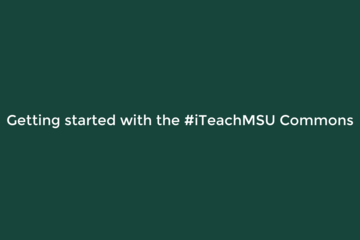Browse
Disciplinary Content
Posted on: #iteachmsu

Disciplinary Content
Prevention Strategies
Authored by:
Super Admin

Posted on: Accessibility

Disciplinary Content
School interventions
Authored by:
Scarlet Ethan

Posted on: #iteachmsu

Disciplinary Content
Researching : Science and technology
Posted by:
Rohit 936 shinde

Posted on: #iteachmsu

Disciplinary Content
study uses structural equations modeling
Posted by:
Rohit 936 shinde

Posted on: Assignment Test Group

Disciplinary Content
test
Posted by:
Rashad Muhammad
Posted on: Agile testers group 2

Disciplinary Content
WHAT IS WORKPLACE FLEXIBILITY?
Posted by:
Chathuri Hewapathirana 1

Posted on: #iteachmsu

Disciplinary Content
Getting Started with the #iTeachMSU Commons
Posted by:
Rashad Muhammad

Posted on: #iteachmsu

Disciplinary Content
Playlist using bookmarks- Jagruti
Posted by:
Jagruti Joshi

